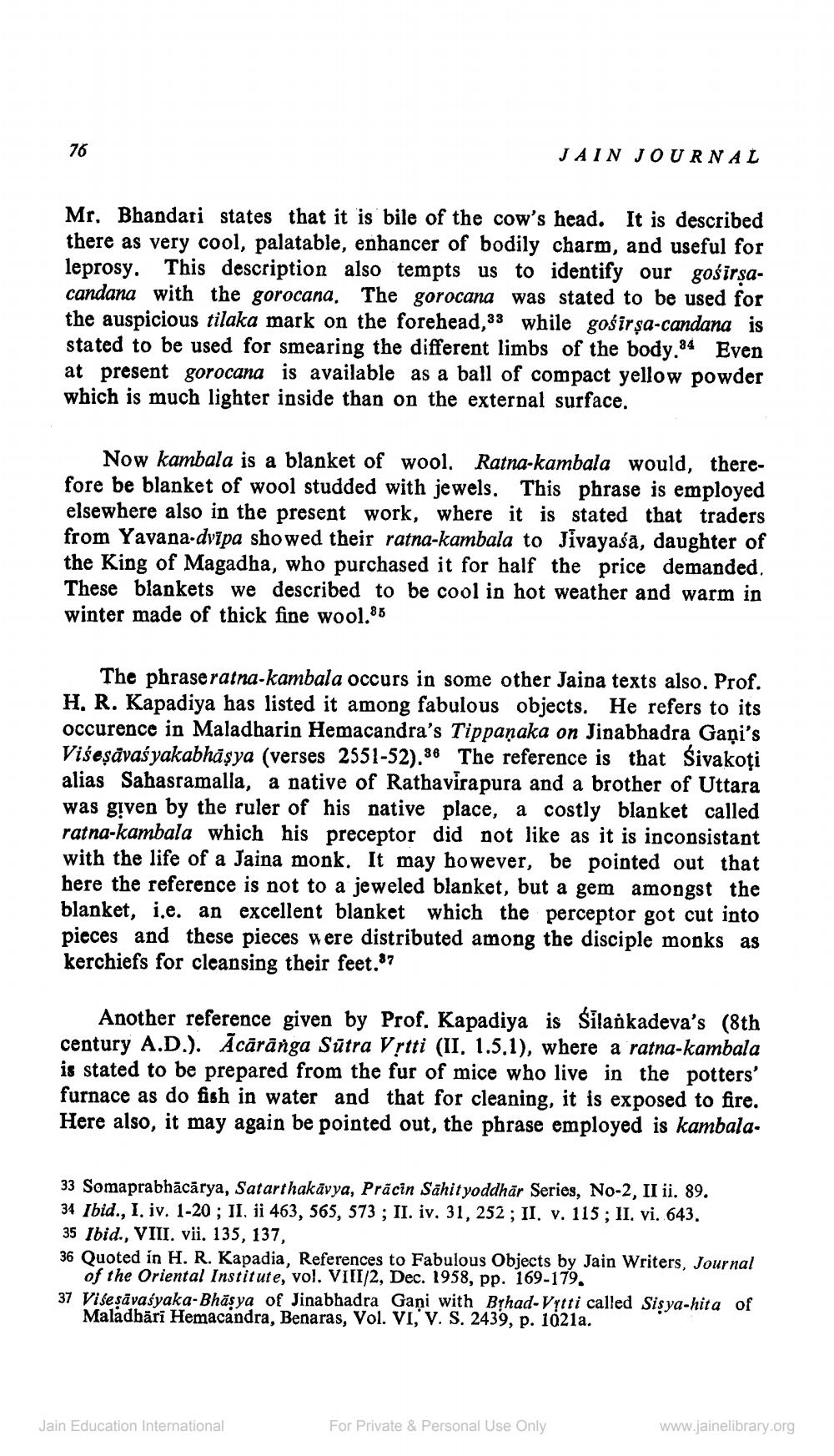________________
76
Mr. Bhandari states that it is bile of the cow's head. It is described there as very cool, palatable, enhancer of bodily charm, and useful for leprosy. This description also tempts us to identify our gośirṣacandana with the gorocana, The gorocana was stated to be used for the auspicious tilaka mark on the forehead,33 while gośirşa-candana is stated to be used for smearing the different limbs of the body.84 Even at present gorocana is available as a ball of compact yellow powder which is much lighter inside than on the external surface.
JAIN JOURNAL
Now kambala is a blanket of wool. Ratna-kambala would, therefore be blanket of wool studded with jewels. This phrase is employed elsewhere also in the present work, where it is stated that traders from Yavana-dvipa showed their ratna-kambala to Jivayasa, daughter of the King of Magadha, who purchased it for half the price demanded. These blankets we described to be cool in hot weather and warm in winter made of thick fine wool.85
The phrase ratna-kambala occurs in some other Jaina texts also. Prof. H. R. Kapadiya has listed it among fabulous objects. He refers to its occurence in Maladharin Hemacandra's Tippaṇaka on Jinabhadra Gani's Viseṣāvas yakabhāṣya (verses 2551-52).36 The reference is that Śivakoti alias Sahasramalla, a native of Rathavirapura and a brother of Uttara was given by the ruler of his native place, a costly blanket called ratna-kambala which his preceptor did not like as it is inconsistant with the life of a Jaina monk. It may however, be pointed out that here the reference is not to a jeweled blanket, but a gem amongst the blanket, i.e. an excellent blanket which the perceptor got cut into pieces and these pieces were distributed among the disciple monks as kerchiefs for cleansing their feet.37
Another reference given by Prof. Kapadiya is Šilankadeva's (8th century A.D.). Acārānga Sutra Vrtti (II. 1.5.1), where a ratna-kambala is stated to be prepared from the fur of mice who live in the potters' furnace as do fish in water and that for cleaning, it is exposed to fire. Here also, it may again be pointed out, the phrase employed is kambala
33 Somaprabhācārya, Satarthakāvya, Präcin Sahityoddhär Series, No-2, II ii. 89. 34 Ibid., I. iv. 1-20; II. ii 463, 565, 573; II. iv. 31, 252; II. v. 115; II. vi. 643. 35 Ibid., VIII. vii. 135, 137,
36 Quoted in H. R. Kapadia, References to Fabulous Objects by Jain Writers, Journal of the Oriental Institute, vol. VIII/2, Dec. 1958, pp. 169-179.
37 Viseṣāvasyaka-Bhasya of Jinabhadra Gani with Brhad-Vitti called Sisya-hita of Maladhari Hemacandra, Benaras, Vol. VI, V. S. 2439, p. 1021a.
Jain Education International
For Private & Personal Use Only
www.jainelibrary.org




